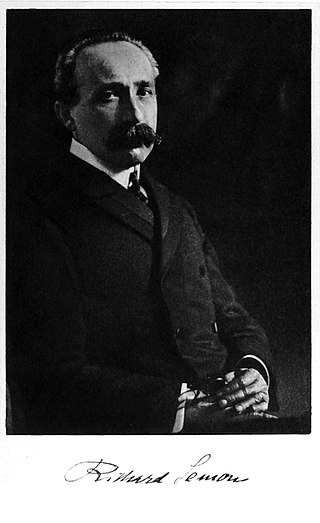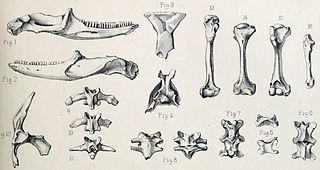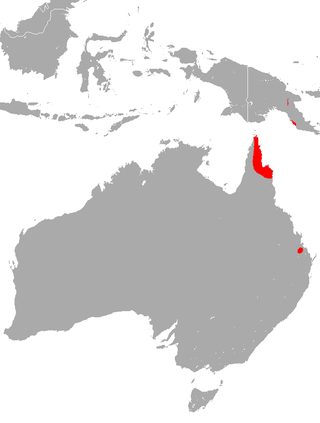
Skinks are lizards belonging to the family Scincidae, a family in the infraorder Scincomorpha. With more than 1,500 described species across 100 different taxonomic genera, the family Scincidae is one of the most diverse families of lizards. Skinks are characterized by their smaller legs in comparison to typical lizards and are found in different habitats except arctic and subarctic regions.

Prasinohaema is a genus of skinks characterized by having green blood. This condition is caused by an excess buildup of the bile pigment biliverdin. Prasinohaema species have plasma biliverdin concentrations approximately 1.5-30 times greater than fish species with green blood plasma and 40 times greater than humans with green jaundice. The benefit provided by the high pigment concentration is unknown, but one possibility is that it protects against malaria.

The Bermuda skink, longnose skink, or (Bermuda) rock lizard is a critically endangered species and the only endemic land-living vertebrate of Bermuda. It is a relatively small skink : adults reach an average snout-to-vent length of about 8 cm (3.1 in).

The brush-tailed phascogale, also known by its Australian native name tuan, the common wambenger, the black-tailed mousesack or the black-tailed phascogale, is a rat-sized arboreal carnivorous marsupial of the family Dasyuridae, characterized by a tuft of black silky hairs on the terminal portion of its tail. Males of this species do not live past the age of one, as they die after reproducing.

The common echymipera, or common spiny bandicoot, is a bandicoot. It is long-snouted even by bandicoot standards. The upper parts are a coarse reddish-brown, flecked with spiny buff and black hairs. The tail is short and almost hairless. Length varies between 30 and 40 cm, with the tail accounting for an additional 8 to 10 cm ; the weight is from 0.6 to 2 kg.

The grand skink is an endangered species of large skink endemic to the central Otago region of New Zealand.

Richard Wolfgang Semon was a German zoologist, explorer, evolutionary biologist, a memory researcher who believed in the inheritance of acquired characteristics and applied this to social evolution. He is known for coining the terms engram and ecphory.

The Australian smelt is a small, pelagic silvery freshwater fish found in large numbers in waters of the south eastern Australian mainland.
Green tree skink can refer to several skink species:

The Mauritian giant skink is a large, extinct species of skink It was found only in Mauritius. It became extinct sometime in the 17th century, likely due to human-introduced predators.
Carinascincus palfreymani, known commonly as the Pedra Branca skink, as well as the Palfreyman's window-eyed skink, the Pedra Branca cool-skink, or the red-throated skink, is a species of skink in the family Scincidae. The species is endemic to Australia, and is restricted to the windswept Pedra Branca, an island off southern Tasmania of only 2.5 ha, where it is dependent on the seabird colonies. It is the only lizard species found on the island.

The striped bandicoot is a species of marsupial in the family Peramelidae. It is found in West Papua and Papua New Guinea. Its natural habitat is subtropical or tropical dry forests. The striped bandicoot is a host of the Acanthocephalan intestinal parasite Australiformis semoni.

Semon's leaf-nosed bat or Semon's roundleaf bat is a species of bat in the family Hipposideridae. It is found in Australia and Papua New Guinea.

Carinascincus metallicus, the metallic cool-skink or metallic skink is a species of skink in the family Scincidae. It is endemic to Australia, found in southern Victoria, as well as in Tasmania where it is the most widespread and common lizard, occurring on many offshore islands in Bass Strait as well as the mainland. It gives birth to live young. It is highly variable in colour and pattern, and may be a complex of closely related species.
Plasmodium minuoviride is a parasite of the genus Plasmodium.
Prasinohaema prehensicauda, the prehensile green tree skink, is a species of skink. It is found in Papua New Guinea.

Papuascincus flavipes, also known as the common green tree skink, is a species of skink found in Papua New Guinea.

Sphenomorphinae is a large subfamily of skinks, lizards within the family Scincidae. The genera in this subfamily were previously found to belong to the Sphenomorphus group in the large subfamily Lygosominae.

Trachylepis brevicollis, the short-necked skink or Sudan mabuya, is a species of skink found in Sudan, Ethiopia, Eritrea, Somalia, Kenya, Uganda, Tanzania, Yemen, Saudi Arabia, and Oman.
Parker's green tree skink is a species of skink found in New Guinea.















